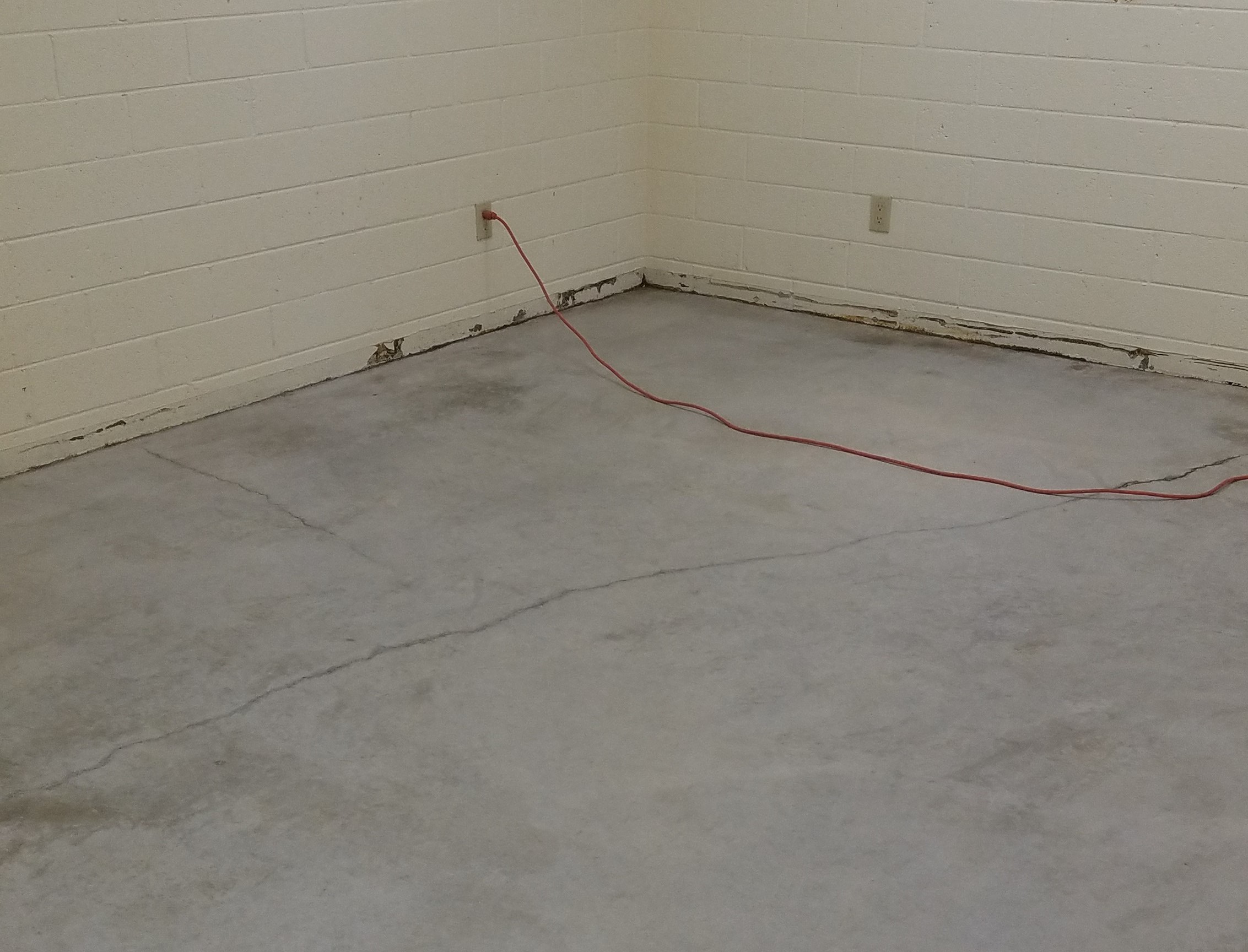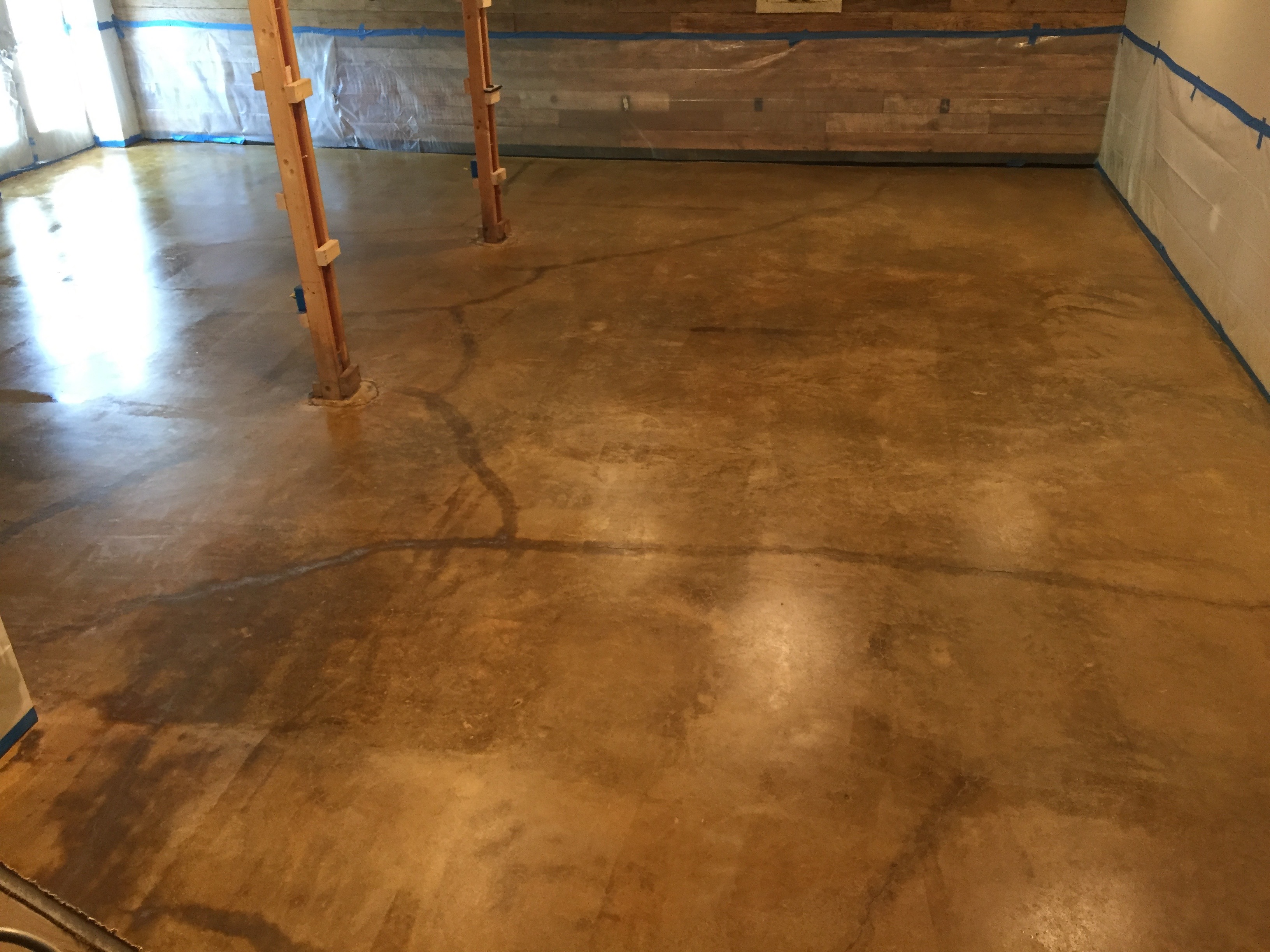Staining Cracked Concrete
Repairing Concrete & Staining Cracked Concrete
A common question that we get at Concrete Camouflage is "What should I do about cracked concrete? How can I fix it?" and "Can I still stain cracked concrete?". The short answer is that you can still stain cracked concrete, but you have to evaluate the size of the crack and the material used to fix it before staining cracked concrete. Below we will go through how to fix cracks in concrete and sealing cracks in concrete.

Why Does Concrete Crack
Concrete is normally a very durable and resilient material that can last for many years. But, on occasion, your brand new concrete (or even your slightly older concrete) will develop cracks. We could write an entire article on the reasons that concrete cracks and how to avoid it, but for brevity's sake, we will just give a few common reasons that concrete cracks. Most of these issues can be avoided by properly communicating with the contractor doing the installation, ensuring the contractor is trustworthy through either official or word of mouth reviews, and by doing the research yourself.
Common Reasons Why Concrete Cracks
Too much water in the concrete mixture: Concrete does not require much water to be properly installed, but often times contractors use more water than needed to spread out the concrete and make the job easier.
The concrete has dried too fast: Which is why you see concrete poured in the heat of the summer be more prone to cracking than concrete poured in the cooler months. As concrete dries and cures within the first month of pouring it, the water that was mixed in, is exiting. If the water exits the concrete too quickly then the concrete cracks. Many contractors choose to battle this by applying a curing agent, which is essentially a type of sealer. This prevents the moisture from escaping through the surface and forces it to escape through the bottom and sides, dramatically slowing down the water exit. However, if you intend to stain the concrete, then the curing agent must be completely removed, involving chemical stripping and likely sanding. So, when planning to pour fresh concrete intended for staining, using a curing agent isn't the best of ideas and should be avoided. If you're in the heat of the year and concerned with cracking, then employing the old school method of watering the concrete daily is your best bet. Once the concrete has dried hard enough that applying water won't damage the surface, you can hand water with a hose or set a sprinkler to continually water the concrete and keep it saturated wet. I remember an old photo where a contractor had built temporary walls around a slab of concrete and had immersed it in water, for the first month. Over 100 years later that concrete still had no cracks.
The improper type of concrete was used for the project: Concrete comes in various strengths and mixes for different projects and implementations. To ensure that the correct strength and mix is used, consult with your contractor on what the project is to ensure the proper concrete is installed. For instance, having air injected into the concrete mix will greatly extend the life and structural integrity of the concrete through cold/hot cycles.
Control joints were not properly implemented: Control joints allow your concrete to crack where it is supposed to. That's why you see the tooled in joints every 4' or so in sidewalks, as well as saw cuts strategically placed on parking lots, driveways and roads. When, where and how control joints should be used depends on several factors including size, thickness, intended use and type of traffic and the substrate. As these and other factors vary wildly between projects, you'll want to discuss this with your contractor.
The soil below the concrete was not properly compacted: There are different schools of thought on this one. Some feel the the harder and more solid the ground beneath the better, while others believe that the use of a cushion sand is ideal. The truth is they're both correct. The bottom line is this, if the ground beneath the concrete shifts and moves, the concrete will crack no matter what you do. So you should ensure the ground beneath is as solid and compacted as possible. However, a layer of cushion sand over that also helps to allow a slight amount of movement beneath without negatively impacting the concrete. Since it's cushioned, it allows it to float a bit and helps avoid cracking concrete.
A final note to make is that concrete cracks. No matter what you or your contractor does to prevent it, if the ground beneath moves enough or if the concrete decides it just wants to crack, then it will. So the best thing to do is ensure that a proper steel grid is properly placed in the center of the concrete, to hold it together and hopefully contain the cracks to hairline and not allow them to open up larger. D.O.T. grade rebar is best, typically placed on 12" to 18" centers.
How To Fix Cracked Concrete
If you only have hairline cracks (too small to stick a quarter into), then you should leave them alone. There is no reason to attempt repairing cracks before staining. A good concrete sealer should seal these types of cracks in concrete off after staining and these kinds of cracks will only add character to the slab. The hairline cracks in concrete normally give an individual appearance to your concrete, especially if you are planning on staining the floor. As mentioned, the normal test for this is to see if you can insert a coin into the cracks in the concrete. If you can't, then your cracks are small enough to just seal over. If you can fit a coin in the cracks, then you may want to patch the concrete before doing more work. Here are some basics of concrete crack repair.
There a few types of concrete crack filler: You can use a concrete patch material, concrete resurfacing material or you can mix portland and sand together along with some water and a small amount of bonding agent. If you are planning on staining the concrete after you have patched it, make sure to use a cementitious product to perform the patches and you are going to want to create a test board and compare with the existing concrete, which is outlined in the next section.
If you are sealing the hairline cracks after staining the concrete indoors, you should also apply a coat of wax. This wax is your "sacrificial" coat, it will ensure that you won't have to reseal the concrete in the future, you will just have to apply more wax. This is less information on how to fix concrete cracks and more a concrete acid staining best practice.
Staining Patched Concrete
You can still stain concrete that you have patched up, but there are a few things to keep in mind. First, as mentioned above, you need to make sure that you have filled the concrete with a cementitious type product and not a silicone or caulking material before staining cracked concrete. Before that though, we recommend putting some of the patching material on a piece of plywood or stiff cardboard, to make a sample board. You would purchase a small amount of every one of the different patching materials available at your local home improvement or lumber store. Mix each material as directed on its label, and put a small amount, a few inches square or so on the board or cardboard. Let them all dry for at least a few days, or as directed on their labels. Then you can do some color tests. Do a concrete stain color test on your concrete in an out of the way place and stain the patch samples that you made and compare to see if they are the same. If the patch material stained lighter, then try applying a second coat of stain to see if it will blend in better.

Design of Cracked or Patched Concrete
If you have already patched the cracks in your concrete previously and are concerned about the appearance after staining, don't despair. You can help camouflage the cracks or patched cracks by using stain colors that tend to give multiple colors, like Honey Oak, Riverstone, and many others that Concrete Camouflage offers. Additionally, you can do one coat overall, then after it dries, you can spray on a second coat using the same color or a different color, holding the sprayer up higher and dropping it lower and then back higher and so forth as you go, and therefore highlighting it to help bring out more color variances. You could also consider using the patching as an artistic component and even add saw cuts and/or scoring and perhaps even multiple colors, to complete a truly unique piece of concrete art.
Worst case, you can apply one coat of sealer after it's stained and neutralized, then use children's watercolor paints or artist acrylic paints to color and blend in the patched areas. Then applying sealer over that will lock it in and push it beneath the clear coat so it looks more natural. Applying wax over that pushes it even further beneath the clear coats and helps it look more natural.
Whatever the condition of your concrete, there really isn't anything that would prevent you from creating a truly unique piece on the interior or exterior of your home. If you have more questions about staining cracked concrete, patching concrete before staining, or just general questions about acid staining concrete in general, feel free to reach out!
